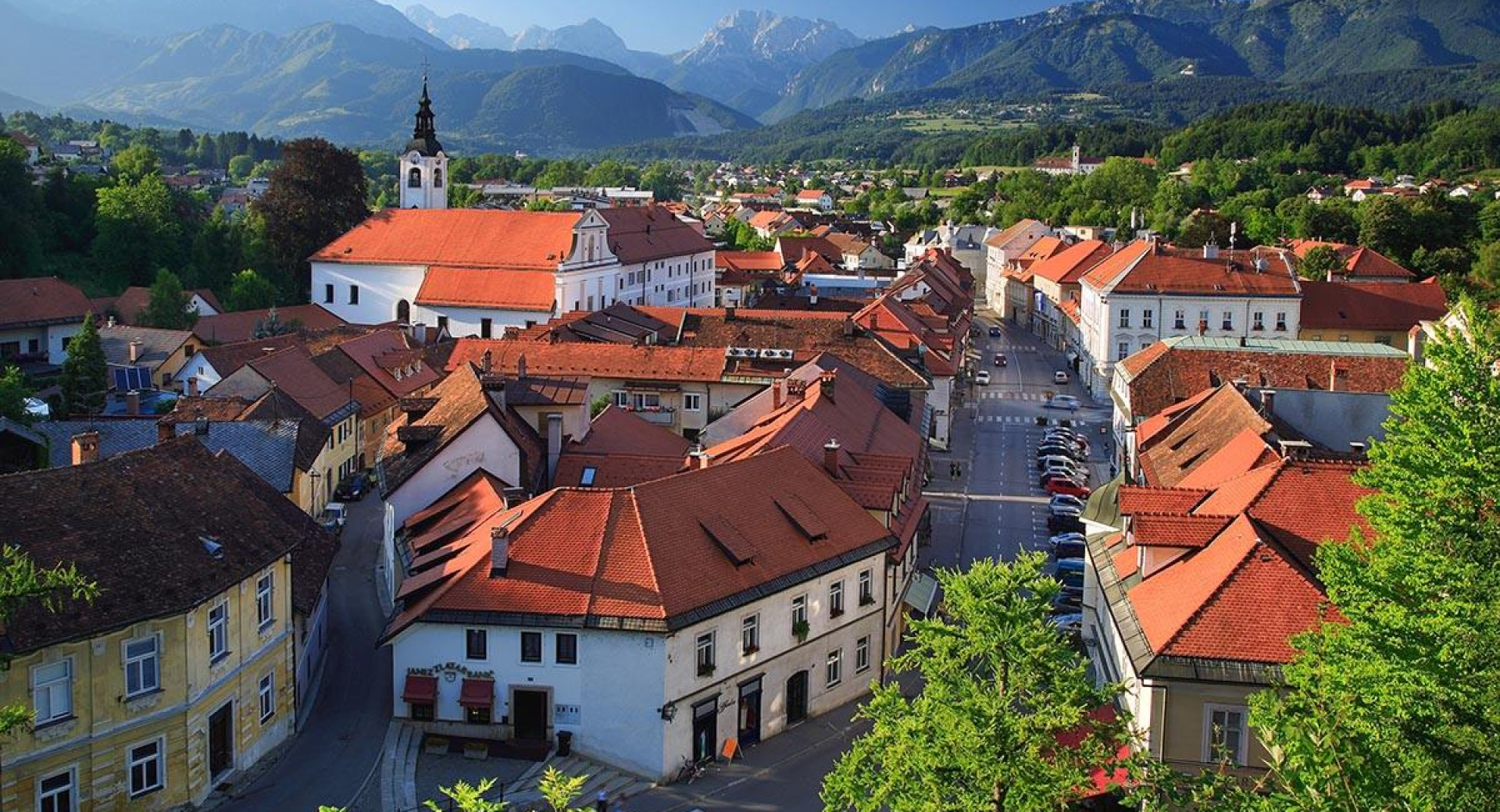Kamnik
Kamnik, a picturesque small town situated along the Kamniška Bistrica river, had its heyday in the Middle Ages, when for a time it was the capital of Carniola.

Its former glory can still be seen in the medieval urban design of its old city centre, Zaprice Castle (Grad Zaprice) and Little Castle (Mali grad).
The Kamnik area has been settled since prehistory. The development of the town of Kamnik was due to its position at the crossroads of important trade routes. In the Middle Ages, Kamnik was a flourishing craft town with its own mint providing home to several distinguished noble families, while in the 19th and early 20th centuries it saw a boom in industry.
Kamnik bears witness to several different historical periods. The façades of its houses reflect a diverse range of influences, from Gothic architecture to the Viennese Secession. Kamnik's major attractions are the old part of the town with its picturesque Glavni trg square, a medieval guildhall called Šutna, a castle referred to as Little Castle (Mali grad), a Franciscan monastery with a famous chapel of the Holy Grave (Kapela Božjega groba), several works by the architect Jože Plečnik, and a magnificent ancient library.
The major attractions of the town's surrounding area are the Volčji Potok Arboretum, the Terme Snovik health resort, the Tunjice Healing Grove, renowned for its beneficial energies, and the scenic Velika Planina high mountain plateau.
Discover tourist destination only 30 kilometres from Ljubljana, Slovenia.In Kamnik you will find oldest herdsmen settlement, wellness offer, numerous hiking ...
